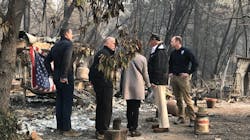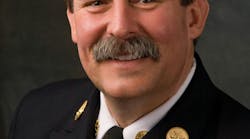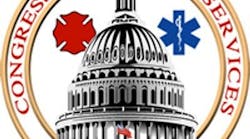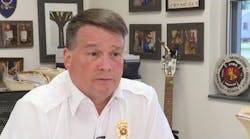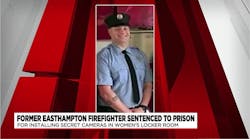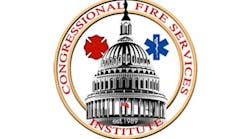Nov. 18 -- A somber President Trump toured the devastation of California’s deadly wildfires Saturday, striking a chord of unity as he vowed to marshal the power of the federal government to help recovery efforts in a state he has long criticized.
Trump seemed visibly shocked as he visited the charred landscapes of the Camp and Woolsey fires, which have killed more than 70 people and left 1,200 others unaccounted for, destroyed more than 12,700 structures and largely erased the picturesque town of Paradise in the Sierra Nevada foothills.
“Hopefully, this will be the last of these, because it was a really, really bad one,” Trump said. “People have to see this to really understand it. As big as they look on the tube, you don’t see what’s going on until you come here.”
Trump was joined in his afternoon visit by Gov. Jerry Brown and Gov.-elect Gavin Newsom as they put aside political tensions to discuss how to join forces to help the state recover and prevent future wildfires.
The president vowed to help California “100%” and did not repeat controversial — and hotly contested — remarks he made last weekend that blamed the disasters on California’s fire and forest management.
“I think everybody’s seen the light,” he said. “We’re all on the same page now. It’s all going to work out well.”
Trump even had warm words for Brown, a political nemesis who has loudly criticized him on climate change, environmental regulations and immigration.
“I’ve known Jerry for a long time but I think we’ve gotten closer today than we’ve got over the last 20 years,” Trump said. “We both want to come to the right conclusion. And the right conclusion is we have to get these forest fires to stop.”
Brown, for his part, thanked Trump for putting a spotlight on the tragedies, and Newsom praised him for issuing major disaster and emergency declarations, which will provide federal funding to cover up to 75% of California’s cost to remove debris, conduct emergency activities and provide transitional sheltering. The Trump administration also has issued three grants to provide similar levels of funding to states to cover the costs of assistance to California.
On Saturday, authorities announced that eight more bodies were found the day before in Butte County and the number of people unaccounted for jumped from 631 to 1,276. Authorities are continuing to comb through 911 calls, emails and other reports of missing people.
Butte County Sheriff Kory Honea said, however, that the list of the missing is dynamic and may include people who were counted twice, whose names were misspelled or who may not know they were reported missing.
Trump also met Saturday with survivors of the mass shooting in Thousand Oaks in a private meeting at Point Mugu Naval Base. A gunman opened fire at a local bar on Nov. 7, killing 12 people before taking his own life.
Trump did not address his views on gun control, but he called the shooting a “horrible event in a great area.”
It was just his second trip as president to the nation’s most populous state. He made his first visit in March to inspect border wall prototypes outside San Diego.
To survivors of the blazes, Trump’s visit was welcomed, criticized — or largely ignored amid the urgent need to find shelter, arrange schooling, seek financial help and worry about pets left behind.
At a disaster recovery center at the Chico Mall, hundreds of survivors of the conflagration that destroyed Paradise stood in line to replace documents and apply for federal aid. Pam Kopping, 46, still gets the chills when she thinks about her escape: ash falling like rain, smoke so thick she could hardly see or breathe.
She and her two sons, ages 6 and 10, are fortunate to have a place to stay with an aunt in Chico, but they are scrambling to figure out whether the children’s charter school will resume classes.
Those concerns weighed more heavily on her mind than Trump’s visit. “I’m so thankful to be here,” she said.
Another survivor, Pam Weaver, recalled the surreal scene on the day the Camp fire broke out: talking to her sister on the phone about last year’s wildfires in Santa Rosa — then seeing embers flying everywhere outside her window. She had to evacuate and later learned she had lost her home.
Weaver said the president’s visit makes her feel like her town is “not forgotten.”
“I think it’s going to make the community feel like they’re important,” she said.
But Sean Bandstra, 43, was one Trump supporter who was offended by the president’s comments blaming California fires on mismanagement. “That’s the first thing he comes up with?” Bandstra said. “I could do without him.”
A similar scene played out in Malibu, where dozens of federal, state and local agencies set up tables inside a Los Angeles County courthouse to help residents with aid.
Carol Bretonne, 78, stood behind more than a dozen people to find help to rebuild her Malibu home. It was the second time she lost everything. A 1978 blaze destroyed her house. A year later she started construction on a new one, which was charred by the Woolsey fire.
She worried about the high cost of debris removal, which her insurance doesn’t cover. She was still grieving the loss of her neighborhood — and, a week later, her mother, who died of old age. The double tragedies left her unconcerned about Trump’s visit.
“What is he going to do?” she asked. “He doesn’t do anything.”
Carrie Armstrong, 57, of Topanga Canyon spent six days holed up in her niece’s Van Nuys apartment with her cat and dog. She returned, grateful to be alive, with her home still standing. The worry has turned to anger as she thinks about Trump visiting her home state.
“He’s only visiting because he got so much flak and negative feedback” from his tweet blaming the state for the disaster, she said.
“He’s still the president,” she said. “He shouldn’t speak so badly about people [in crisis]. He hates California.”
Steven Cordrey, 52, stood nearby. He lost his house in the 1994 Malibu fires but said this time was worse because he has not been able to get any information about his house.
“It’s 2018!” he said, his voice shaking with emotion. “This is a travesty. We have not been allowed in [his neighborhood] for nine days. We’re treated like criminals when I go to checkpoints to ask.”
He believes he spotted rubble where his home once stood when Caitlyn Jenner posted a video from her hilltop home that panned across the neighborhood.
“That’s how all of us found out,” he said. “Nine homes. Nine neighbors. That’s not OK that’s how we found out there’s no neighborhood and nobody’s there.”
Despite the tremendous devastation in the Malibu hills, Cordrey said Saturday that some things remained the same: surfers catching waves, trees tinged with fall colors swaying in the wind, and the sun reflecting off the rippling ocean.
“It’s very surreal,” he said. “Because where we’re at, there is nothing.”
In Topanga, people streamed in and out of the post office to pick up mail as they struggled to return to normalcy. Ryan Victor, 47, was among the thousands of area residents forced to flee their homes when the fire began nine days ago.
First on his list: Pick up the pile of mail that had accumulated since he evacuated from his Topanga home.
As he went about his errands, he said that he had become numb to Trump’s rhetoric, but that this was different.
“The idiotic things that come out of his mouth doesn’t register much anymore,” he said. “But I’m outraged over the hypocrisy.”
He noted the president’s accusatory tweet, followed by what now seems like a show of support and compassion by visiting.
“With him, as long as he signs the check” to help with the recovery “and doesn’t withhold federal funds for forest management, that’s all that matters,” Victor said. Everything else is just “a lot of noise.”
Jesse Gordon, 49, said he opposes many of Trump’s policies and thinks his visit could be positive, but it would take more than that to make a difference.
Trump could redeem himself through action by supporting and crafting policies that protect the coast, parks and addresses climate change, he said.
“It’s not about pointing the finger,” he hopes Trump learns. “It’s what can we do to keep us all safe in this planet that is changing so quickly and dangerously.”
Last week, Trump upset Californians after tweeting that forest mismanagement was to blame in large part for the fires.
“There is no reason for these massive, deadly and costly forest fires in California except that forest management is so poor,” he tweeted. “Billions of dollars are given each year, with so many lives lost, all because of gross mismanagement of the forests. Remedy now, or no more Fed payments!”
Rep. Doug LaMalfa (R-Richvale), who was traveling with the president Saturday, briefed reporters shortly before Air Force One landed in California about the significance of forest management, according to a White House pool report.
“The president wants to get something done on this,” LaMalfa said. “We need to be a lot more aggressive.”
LaMalfa dismissed criticism of the president’s earlier tweet on forest management as having more to do with its timing and politics than the substance of the argument.
He said that forest management does not mean clear-cutting but rather thinning and creating buffers around populated areas.
“Without forest management, things can go wrong,” he said.
Trump continued to talk about forest management Saturday. “We’ve got to take care of the floors, you know the floors of the forest. It’s very important,” the president said.
He also alluded to Finland, saying that country focuses “on raking and cleaning. They don’t have any problem and when it is … I know everyone is looking at that.”
The reference to Finland puzzled some, because its ecosystem is so different from California’s.
Trump, however, made it clear Saturday that his embrace of California and its environmental values will only go so far. Asked about whether his views on climate change had shifted, the president said no: “I have a strong opinion,” he said. “I want great climate.”
And the political polarization toward him is also not likely to change.
On the way to Point Dume, some utility workers held a sign on the side of the road that read: “Make America great again.”
Another cardboard sign read: “Not my President.”
Times staff writers Nicole Santa Cruz in Paradise and Noah Bierman in Washington contributed to this report.
___ (c)2018 the Los Angeles Times Visit the Los Angeles Times at www.latimes.com Distributed by Tribune Content Agency, LLC.
